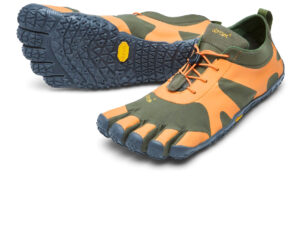Barefoot Shoes: Boon or Bane for Your Feet?
The human foot, a marvel of evolution, is designed for the bare ground. Yet, we spend most of our lives encased in shoes, often with thick soles and ample cushioning. This disconnect from our natural state has, perversely, sparked a growing interest in barefoot shoes and barefoot running and hiking, promising a return to the way our feet were meant to function. But are these minimalist shoes truly good for our feet? Let’s delve into the potential benefits and drawbacks to help you decide if barefoot shoes deserve a place in your wardrobe.
The Allure of Going Barefoot
Walking barefoot allows our feet to flex, grip, and adapt to the terrain in ways that shoes restrict. This stimulates muscles, tendons, and nerves, promoting proprioception (body awareness) and balance. Some proponents claim barefoot walking can even strengthen foot muscles, improve gait, and reduce chronic foot pain.
Enter Barefoot Shoes: Mimicking Nature, with a Twist
Barefoot shoes aim to replicate the barefoot experience while offering some protection. They typically feature:
- Thin, flexible soles: Allowing for ground feel and mimicking the natural bend of the foot.
- Wide toe boxes: Accommodating the natural splay of toes, unlike traditional shoes that often squeeze them together.
- Minimal cushioning: Encouraging the foot’s own shock absorption mechanisms.
Benefits of Embracing Barefoot Footwear
Several potential benefits come with switching to barefoot shoes:
- Improved proprioception and balance: The enhanced sensory feedback from the ground can lead to better balance and stability, reducing the risk of falls.
- Strengthened foot muscles: The lack of support in barefoot shoes forces the foot muscles to work harder,potentially improving strength and flexibility.
- Reduced foot pain: Some studies suggest that barefoot shoes may help alleviate plantar fasciitis, a common cause of heel pain.
- More natural gait: Barefoot shoes encourage a midfoot or forefoot strike, which may be gentler on the joints than a heel strike typical in traditional shoes.
Potential Drawbacks to Consider
However, barefoot shoes are not without their downsides:
- Increased risk of injuries: The thin soles offer little protection from sharp objects or uneven terrain, increasing the risk of cuts, punctures, and sprains.
- Adjustment period: Transitioning to barefoot shoes can initially cause discomfort and soreness as the foot muscles adapt to the new demands.
- Not suitable for everyone: People with certain foot conditions, such as diabetes or neuropathy, may not be suitable candidates for barefoot shoes.
Finding the Right Fit: Not All Barefoot Shoes are Created Equal
The wide variety of barefoot shoes available can be overwhelming. Consider these factors when choosing:
- Activity: Different shoes cater to specific activities like running, walking, or hiking.
- Terrain: Choose shoes with appropriate sole thickness and protection for the surfaces you’ll be walking on.
- Fit: Ensure the shoes fit snugly but comfortably, allowing for natural toe movement.
The Barefoot Verdict: A Personalized Choice
Ultimately, whether barefoot shoes are good for your feet depends on individual factors like your activity level, foot health, and personal preferences. If you’re curious, consider starting gradually, perhaps with short walks on smooth surfaces. Listen to your body, and don’t hesitate to consult a healthcare professional if you experience any pain or discomfort.
Remember, barefoot shoes are not a magic bullet for foot health. A combination of proper footwear, regular exercise, and good foot care practices remains crucial for maintaining healthy, happy feet throughout your life.
Beyond Barefoot Shoes: Additional Tips for Happy Feet
While barefoot shoes offer a unique approach, several other practices can contribute to good foot health:
- Stretch and strengthen your feet: Regular foot exercises can improve flexibility and strength.
- Choose supportive shoes for activities that require it: High-impact activities like running may still benefit from supportive footwear.
- Give your feet some TLC: Regularly wash, moisturize, and trim your toenails to prevent infections and ingrown nails.
- Go barefoot whenever possible: Enjoy the sensory experience and give your feet a break from shoes when safe and practical.
By understanding the potential benefits and drawbacks of barefoot shoes and incorporating other foot-healthy practices, you can make informed choices to keep your feet happy and healthy for years to come.
Remember, your feet are your foundation. Treat them well, and they’ll carry you far!









